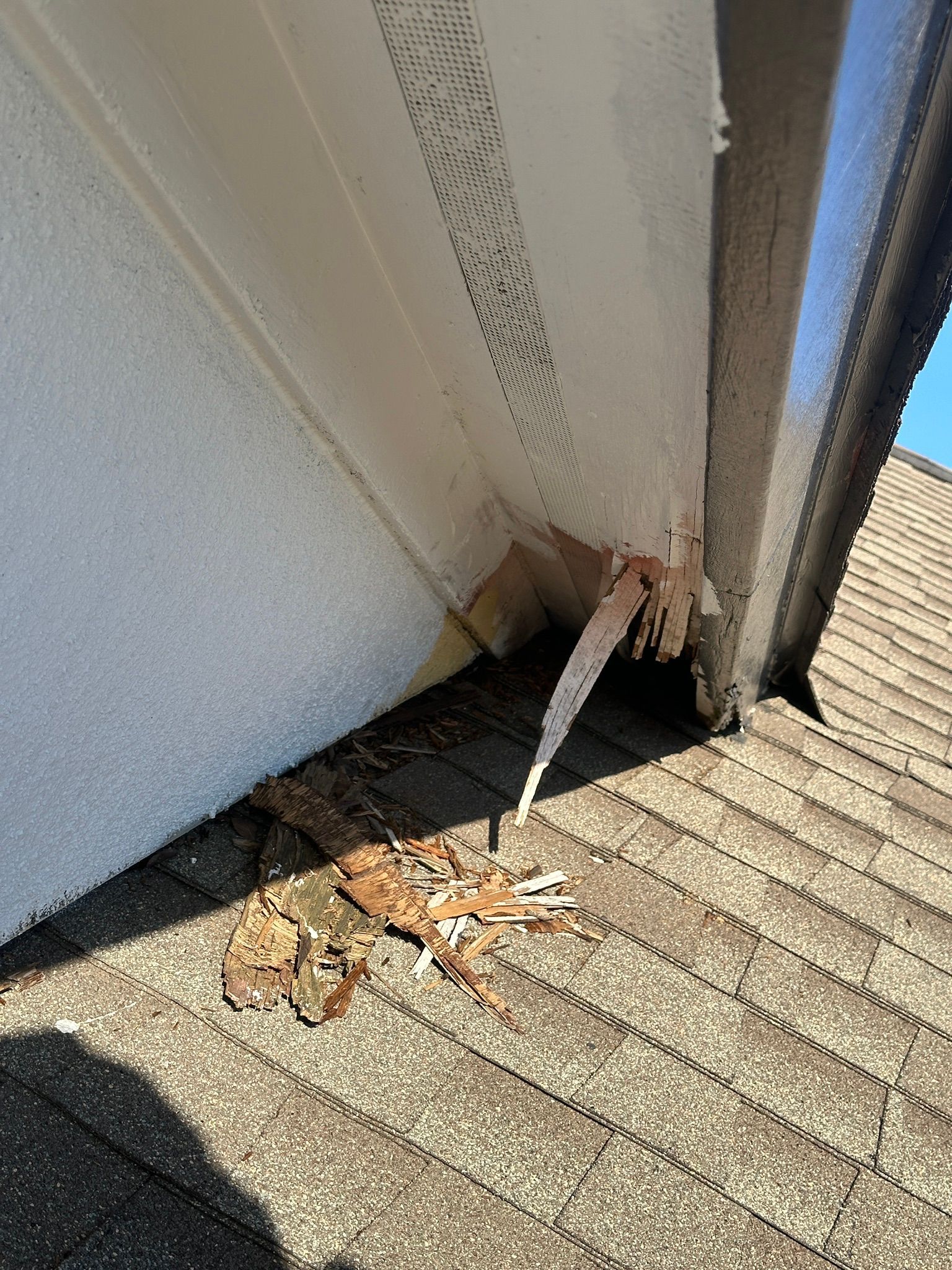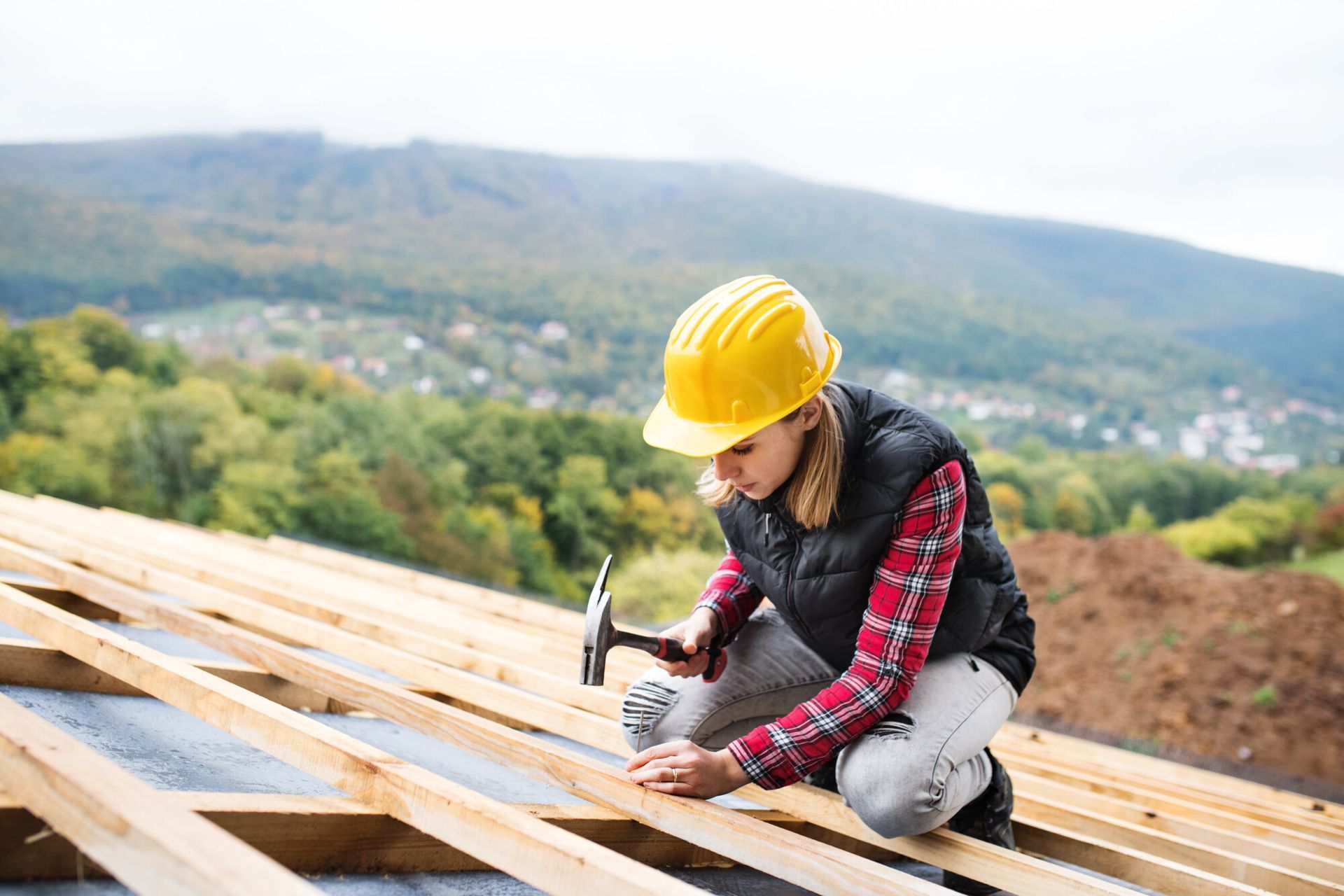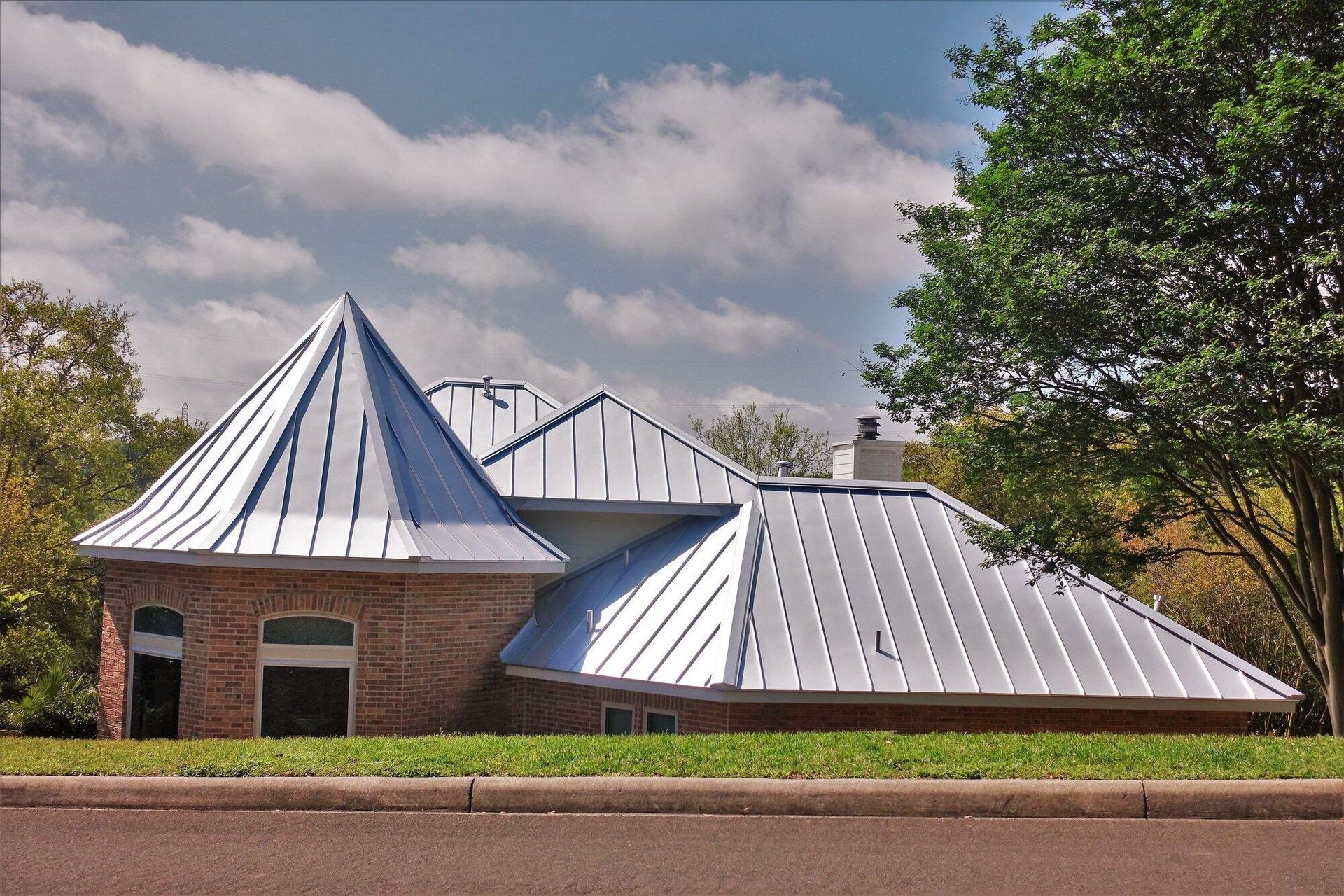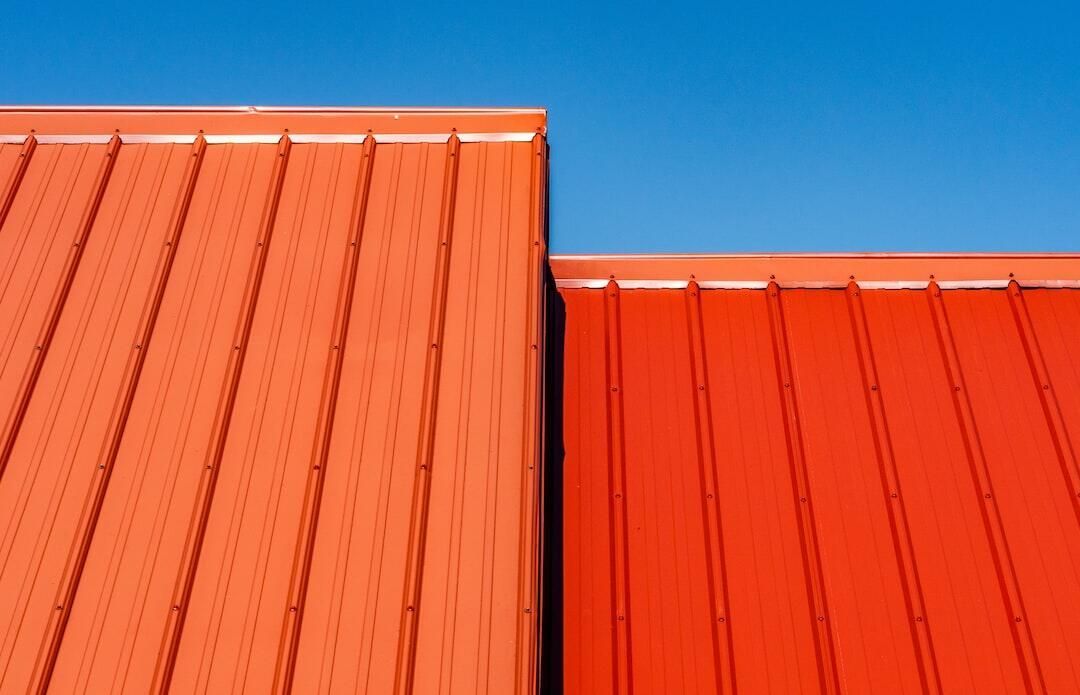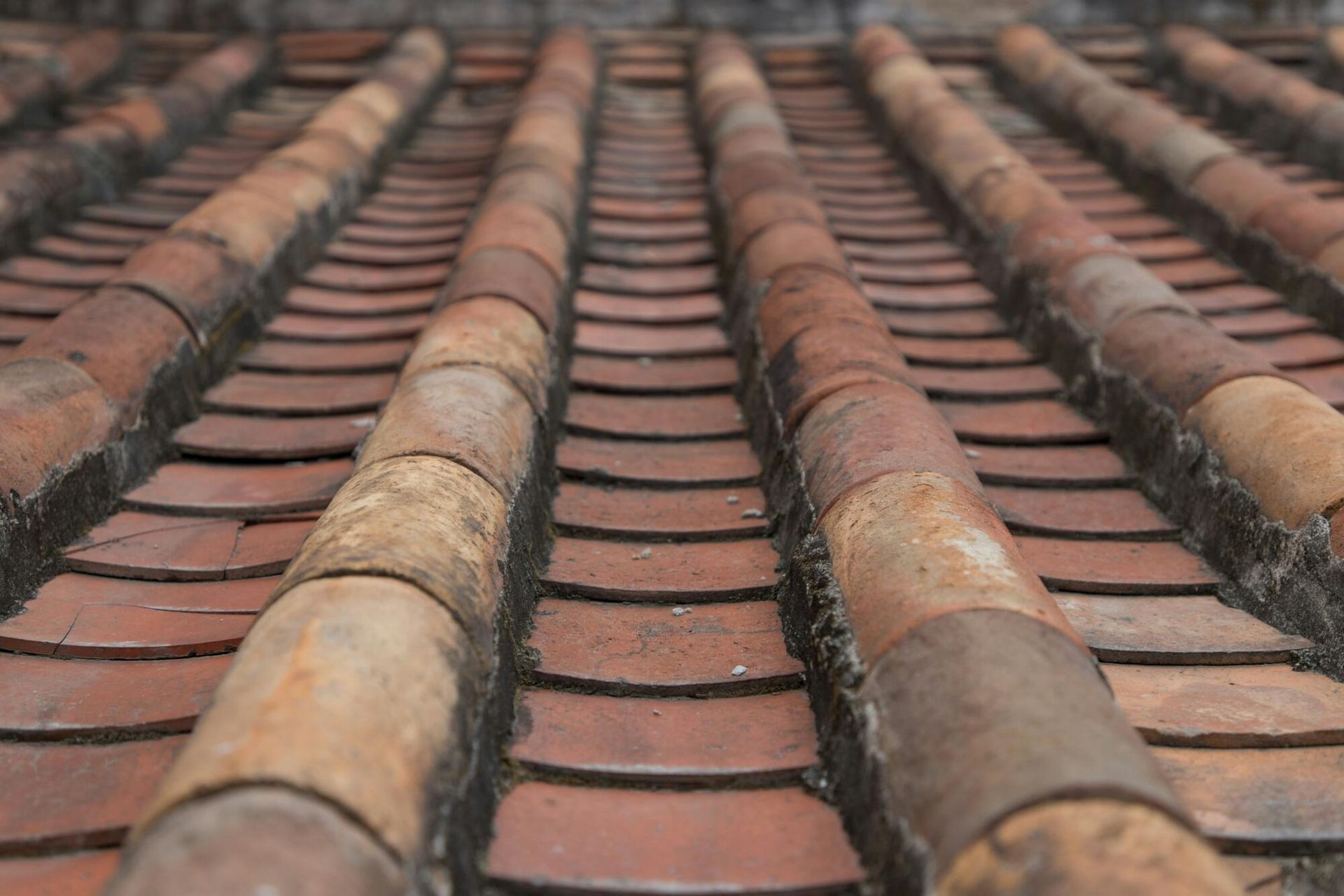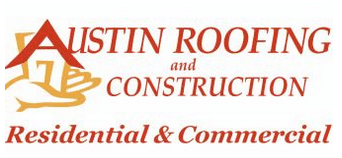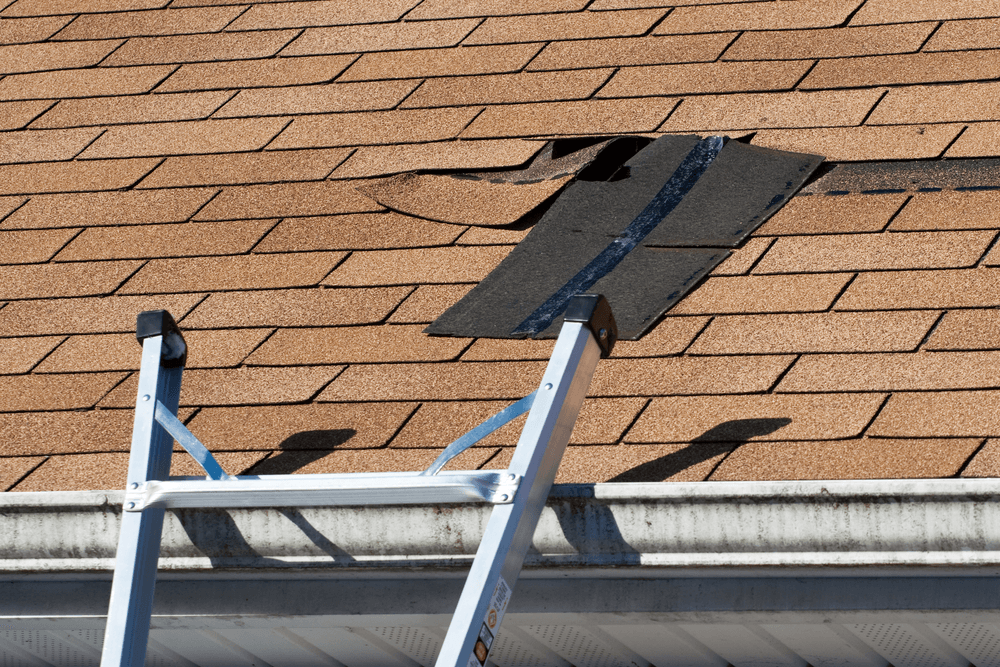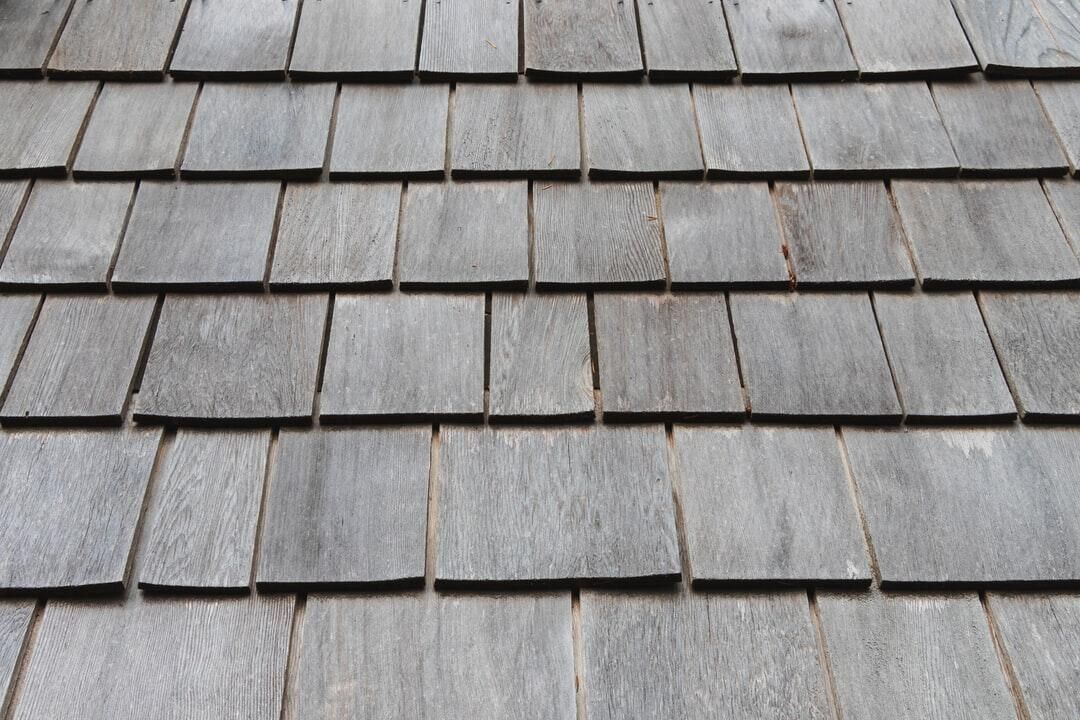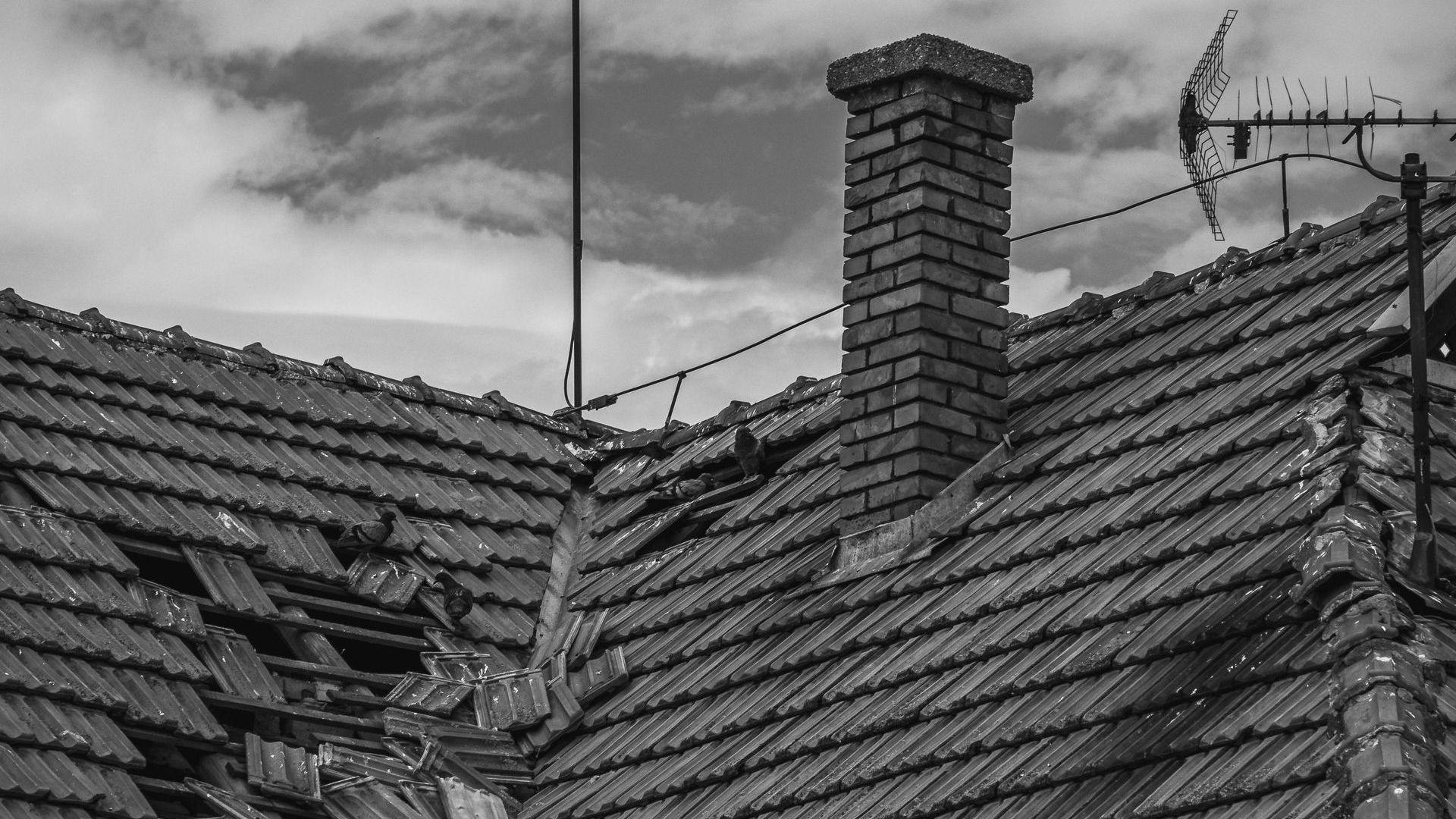How Much Does a Typical Roof Repair Cost?
In America, the national average cost to repair a roof is $884.
What is the Cost to Patch a Roof?
The cost of patching a roof can range from $200 to $1,000, and various factors influence this price. Primarily, the cost varies based on the location of the repair and the specific needs of your roof.
Most homeowners spend between $353 and $1,432 to repair their roof. A small roof repair may cost as little as $150, while a large roof repair can cost a couple of thousand dollars. If you are hiring a professional, their labor will typically cost between $45 and $75 per hour. These numbers are very general estimated averages, but the cost of your roof repair will depend on the details of your project.
Getting a Professional Estimate
To get a comprehensive understanding of potential expenses, it's essential to obtain professional roof repair estimates. These estimates consider your specific situation, from the type of roof you have to the nature and extent of the damage.
Average Costs to Anticipate
Minor to Moderate Repairs
- Minor Repairs: You can expect to spend approximately $300 to $1,900 for minor roof repairs. This range often covers small leaks or replacing a few shingles.
- Factors Influencing Cost: The final cost can depend on factors such as roof material and geographic location.
Extensive Repairs
- Major Repairs: In cases of significant damage, like structural issues or extensive water damage, costs can climb substantially—sometimes reaching up to $8,000 or more.
- Influencing Factors: The type of roof (e.g., asphalt, metal, tile) and labor costs in your area play a substantial role in determining the final price.
What to Consider When Planning Your Budget
When planning for potential roof repairs, it's crucial to factor in:
- Material Costs: Different materials have varying price points. For instance, slate and tile roofs may be more expensive to repair than asphalt shingles.
- Scope of Damage: The more extensive the damage, the higher the repair costs.
- Labor: Labor costs can vary widely based on local market rates.
By understanding these cost components, you can better prepare for the necessary expenses involved in keeping your roof—and your home—safe and sound.
Factors Affecting Cost
- Size of the Damage: A small section with missing shingles might only set you back a few hundred dollars. But keep in mind, larger areas, especially those showing significant wear, will naturally push costs higher.
- Roofing Material: The type of material plays a crucial role. Repairing common materials like asphalt shingles often costs less than fixing tile or metal roofs. If your roof is made of specialized materials like rubber, anticipate higher expenses due to the complexity involved. Slate roofs, for instance, are more labor-intensive, driving up repair costs significantly.
Understanding the type of damage is essential for estimating repair costs effectively. Minor repairs such as securing loose flashing typically range from $200 to $500, whereas more severe issues like a sagging roof can escalate expenses dramatically, costing anywhere from $1,500 to $5,000.
Furthermore, the intricacy of the materials affects the overall costs. While shingle repairs might be straightforward, dealing with a tile roof requires more expertise and effort, leading to higher expenses. So, when assessing potential costs, consider both the extent of the damage and the material involved to budget accurately.
Patching typically occurs during the early stages of roof damage. Waiting until a hole develops or the area becomes unstable can result in more costly repairs. If a significant portion of your roof—more than 30%—requires patching, professionals might suggest considering a full replacement instead of repeated fixes.
The Importance of Timely Roof Repairs
Timely roof repairs are crucial in preventing minor issues from snowballing into significant, expensive problems. Here’s why addressing roof issues promptly should be a priority:
- Cost Efficiency: Small repairs, like fixing leaks, are generally more affordable than dealing with extensive water damage. For instance, while metal roof repairs can vary in cost, delaying these repairs tends to increase expenses dramatically.
- Preventing Major Damage: Ignoring minor damage can lead to more severe structural issues, potentially requiring emergency repairs. These emergencies often come with hefty price tags that could have been avoided with earlier intervention.
- Longevity of Your Roof: Regular maintenance and prompt repairs extend the life of your roof. When small problems are fixed early, the need for a full roof replacement is minimized, saving you from unnecessary expenses.
- Financial Planning: Understanding the potential costs of roof repairs can help you better plan your finances. By setting aside savings for regular maintenance, you safeguard against surprise expenses and protect your investment.
Addressing roof issues as they arise not only protects your home but also ensures peace of mind, knowing that you are avoiding future headaches and preserving the integrity of your property.
Signs You May Need a Roof Replacement
Your roof plays an essential role in protecting your home, so it's crucial to know when it might be time for a replacement. Here are some key indicators that your roof may need an upgrade:
1. Age of the Roof
Roof materials have a lifespan. Most roofs last between 20 to 25 years, depending on the quality of materials and installation. If your roof is approaching or exceeding this age range, consider an inspection to determine its condition.
2. Frequent Repairs
If you find yourself constantly fixing leaks or patching up shingle issues, it could be more cost-effective to replace the roof entirely. Frequent repairs can add up quickly and may not solve underlying larger problems.
3. Visible Damage
Take a look at the shingles. Are they curling, buckling, or missing altogether? Such visible damage suggests that your roofing materials are deteriorating, which can compromise your home's protection against the elements.
4. Water Stains Inside the House
Water stains on ceilings or walls can suggest a compromised roof. These stains often indicate leaks that result from structural issues—problems often best solved by a new roof.
5. Sagging Roof Deck
A droopy or sagging roof deck is a serious problem, often indicating structural issues that go beyond superficial damage. This is a clear sign that a replacement may be necessary to prevent further deterioration.
6. Granule Loss
When asphalt shingles lose their granules, they become less effective. Check your gutters for granule buildup, as excessive granule loss can hasten wear and tear.
7. Increased Energy Bills
Aging roofs can lose their insulating properties, resulting in higher energy costs as heat escapes more easily in winter or enters in the summer. If you've noticed your energy bills creeping up, your roof might be the cause.
Understanding these signs can help you address potential roofing issues early, saving you money and ensuring your home remains safe and sound.
How Do Season and Urgency Impact Roof Repair Costs?
The season and the urgency of a repair can significantly influence the cost of roofing services. Here's how:
- Seasonal Demand:
- Summer: When warm months arrive, the demand for roof repairs generally spikes. Many homeowners schedule maintenance and repairs during this time, seeking to address issues before autumn rains. This high demand can drive prices up, as roofing companies experience a surge in requests.
- Winter: On the flip side, during the cold months, snow and ice can quickly worsen existing roofing problems. If ice dams or heavy snowfall significantly damage your roof, you'll likely need immediate repairs. However, the logistical challenges of working in harsh conditions can increase labor costs, leading to higher prices during urgent winter repairs.
2. Urgency and Immediate Need:
- If a roofing issue becomes severe, necessitating quick action—whether due to a leak or storm damage—you might face additional costs. Contractors may charge more to prioritize these urgent cases, ensuring fast service to protect your property from further damage.
In essence, both the timing of the year and the urgency required to address a roofing problem are key factors impacting the overall repair expenses. Planning ahead and conducting regular maintenance can help mitigate sudden costs and allow for more flexible timing when scheduling repairs.
Should You Opt for DIY or Professional Roof Repair?
Deciding whether to tackle roof repairs yourself or hire a professional involves careful consideration of several factors. Here's how to determine the best approach for your home maintenance needs.
Assessing the Cost
One major consideration is cost. DIY repairs might initially seem like a budget-friendly option. By learning the necessary skills and handling minor repairs yourself, you might save on labor costs. With numerous online resources and video guides, taking on simpler tasks has never been more accessible.
However, it's important to think about the potential long-term expenses. Mistakes can lead to further damage, increasing overall costs. Professional repairs often come with warranties that can save you from pricey future issues.
Safety First
Roof repairs come with inherent dangers. Climbing ladders and navigating sloped surfaces present significant risks, especially without proper training or safety equipment. Injuries from falls or accidents can be serious.
When unsure about safety measures or lacking the necessary safety gear, it's wise to call in professionals who are trained to handle these situations safely.
Weighing Experience Against Complexity
Consider the complexity of the repair. Simple fixes, such as replacing a few shingles or cleaning gutters, might be feasible for someone with handyperson skills. But complex issues—such as structural damage or leaks—require a professional’s expertise and experience.
Tools and Materials
Before committing to a DIY project, ensure you have all the correct tools and materials. Professional roofers are equipped with specialized tools, and they know the best materials for each repair. Sometimes, choosing DIY without the right equipment can result in inadequate repairs.
Making the Decision
Ultimately, the choice boils down to your confidence, skill level, and the specific nature of the repair. If you're experienced and the task seems straightforward, DIY could be a fulfilling and cost-effective option.
However, when in doubt—or if the stakes are high—it’s best to rely on a professional. They provide assurance that the work is done correctly and safely, potentially saving you from future hassles and heightened expenses. Your home’s safety and integrity depend on making the right decision.
Common Roof Repairs
Roofs have several common repairs depending on your location and style of roof. If you live in areas with high wind, shingles can lift and blow off the roof. Leaks are extremely common, especially in weak areas of the roof such as flashing, roof valleys, or chimneys. Larger common repairs include a sagging roof caused by weight, rot, and normal wear. An inadequate roof pitch is also a cause for concern.
Common Areas That Need Repair
If your roof is leaking or needing repairs, there are a few places to check first. These places are weak points in your roof that are more prone to damage.
- Flashing
Flashing is the metal around the objects, edges, and other sections of your roof where there are punctures or angles in the roofing. Flashing can be wrapped around chimneys and skylights but is also in the valleys, sides, and edges of any roof slopes and intersections. As the metal ages, it can bend, crack, and corrode. These can deteriorate in just 10 years.
- Skylight
Skylights are glass or plastic windows in your roof that bring sunlight through your ceiling. Over time, water runs down the slope of a roof and hits the flat edge of your skylight, becoming trapped and creating corrosion. Your sunlight itself can also become cracked, letting water inside.
- Valleys
The valleys in between two sloping roofs are another weak point on your roof. Not only can the flashing inside the valley wear down, but the shingles for each valley must be specially cut to fit. Poorly-cut valleys are filled with gaps that allow water to leak under your roof.
- Chimneys
If your roof is relatively new, but you are still having leaks, you may look into fixing your chimney. Chimneys can have cracked or corroded flashing at the base that lets in water. Old caulking can also be cracked from age, breaking the water-tight seals. If the chimney is very old, the chimney may have cracks inside of it, allowing water inside and underneath the flashing.
How Much Do Common Repairs Cost?
Most flashing repairs cost around $20 in materials, though replacing skylight flashing may cost up to $80. Caulk for your chimney, flashing sealant, or sealant for your skylight will cost about $5 each. Broken or missing shingles may cost $30 or more. Fixing ice dams will cost between $50 to $120. You may also experience leaking because of clogged gutters. If you clean out your gutters yourself, there is no cost to that one.
How Does Cost Vary Between Roof Materials?
Roof repair cost varies greatly between the different materials. Composite roofs are the cheapest to repair, while slate roofs are typically the most expensive to repair.
Asphalt Shingles
On average, roof repair costs are about $710 for an asphalt shingle roof. Most repair work is done due to shingles flying off in high winds. While asphalt shingles are now made to withstand 110 mph wind, a poorly attached shingle will come off even in low winds. Strong winds can lift shingles, causing nails to loosen or tear the shingles. Asphalt shingles can also wear down over time and become more prone to wind damage.
Metal
Metal roofs typically do not need repairs if they have been properly installed. The main issues with metal roofs are breaks in the sealants on the fasteners or locks. Occasionally, fasteners can work loose with time when the roof goes through intensive expansion and contraction. Broken seals, loose seams, and gaps between panel fasteners can let in water in, and the average repair costs here are just over $1,000. However, when you work with quality installers and material providers, a metal roof shouldn't need anything other than the occasional coat of paint.
Wood Shake
To repair a wood shake roof costs an average of $750. Wood shake roofs have different needs. Wood shake roofs are prone to moss buildup and insects if not properly maintained, though cedar shakes are more naturally insect repellant. They can also receive UV damage from the sun and wear out quickly.
Composite
Composite roofs are similar to asphalt roofs except much lighter. Because of this, they only cost an average of $450 to repair. However, they are more susceptible to high-wind damage. Strong winds can lift sections and blow rain underneath. While asphalt roofs may only lose a few shingles, strong winds may blow off entire sections of composite roofs.
Slate
Slate is the most expensive roof to repair, averaging about $1,350 for the roof repair cost. Slate can stick up, causing leakage issues, if the slate is nailed down too tightly. Ice dams also form in slate roofs more often, meaning ice builds up under the slate before leaking onto your ceiling.
Are There Additional Cost Factors?
Certain factors can make roof repair more expensive. When calculating the cost of your roof repair, you should keep these in mind.
Garage Roof
Unattached garage roofs have a different repair scale. They are typically cheaper than repairing the roof on your home. Replacing a whole garage roof will average about $1,500. An attached garage roof may increase the cost of roof repair to your home. Any extra slopes or valleys due to your garage roof will also increase the cost of materials and labor.
Soffit and Fascia
Soffit and fascia are the underneath and edging of your roof respectively. Fascia is the vertical trim around your trusses, while soffit is the under area along the edges of your roof. Both the soffit and fascia protect the frame and trusses of your roof from the elements. Deterioration can happen from age, insects, and small animals. The average cost to replace all this is about $3,300. If you see deterioration, replace it right away before it causes any issues with your rain gutters.
Rain Gutters
The gutters along your roof protect your roof and house from water damage. They direct rain and melting snow away from your trusses and home. If not properly cleaned or cared for, they can build up water, deteriorating the soffit, fascia, and trusses. They can even fall away from the house.
If your gutters only have small holes, you can fix them with a tube of roofing cement and a patch made of the same material as the gutter. This can cost as little as $4. If the damage is more extensive, you may need to replace whole sections of the gutter. This may cost between $10 to $100 depending on how much gutter needs replaced.
Roof Trusses
Roof trusses are the main supports of your roof. If your roof is leaking, water will run along the trusses before leaking through your ceiling. This means your trusses can develop water damage or rot and need replacing. It costs about $3.50 to $4.50 per square foot to replace roof trusses. If you have extensive damage, this can rack up into the thousands of dollars to replace.
How to Save on Roof Repair Costs
Roof repairs can be costly, but there are several strategies to help keep expenses in check. Here's a guide to cutting down on roof repair costs:
- Conduct Regular Inspections: Perform routine visual checks to catch issues like damaged shingles or small leaks early. Identifying these problems beforehand can prevent them from turning into expensive repairs.
- Maintain Your Roof: Regularly clean your roof by removing debris, leaves, and moss. An unclogged gutter system is vital in preventing water damage and minimizing the need for repairs.
- Compare Professional Quotes: When hiring roofing professionals, obtain multiple quotes to ensure you're getting a competitive rate. This allows you to compare not only the costs but also the services provided, helping you make an informed decision.
- Inquire About Warranties: Ask professionals about warranties on materials and labor. These can offer savings if issues arise, as they'll cover repair or replacement costs for a certain period.
- Communicate Budget Constraints: Share your budget limitations with your roofing contractor. They can propose economical solutions or recommend materials that align with your financial situation.
By taking these steps, you can effectively manage roof repair costs without compromising on quality. Regular maintenance and informed decisions make a significant difference.
Are There Financing Options Available for Roof Repair or Replacement?
Absolutely, homeowners today have a variety of financing options when it comes to managing the costs of roof repair or replacement. Here's a breakdown of your choices:
- Contractor Payment Plans
Many roofing contractors offer payment plans that allow you to pay in installments. This can make it easier to manage the expense over time without a large upfront cost. - Personal Loans
Consider securing a personal loan from banks or credit unions. These loans can provide the funds you need quickly, often with competitive interest rates, especially if you have good credit. - Home Equity Loans or Lines of Credit
If you have significant equity in your home, you might use a home equity loan or a home equity line of credit (HELOC). This type of financing often comes with favorable interest rates since it's secured against your property. - Credit Cards
If your repair costs are manageable, using a low-interest credit card could be beneficial. Always ensure that you can pay off the balance promptly to avoid high-interest charges. - Government Programs and Grants
Some government programs offer grants or low-interest loans for home improvements, including roof repairs. It’s worth exploring these options to see if you qualify.
By evaluating your financial situation and these options, you can find a solution that aligns with your budget and needs.
When to Consider a Replacement?
If assessments show extensive damage, roof replacement could be the more viable long-term solution. Constant repairs on an aging roof can often accrue higher costs over time than investing in a replacement. Balancing between patching for minor issues and investing in a new roof can save future costs and prevent further damage.
Opting for a new roof might seem like a significant upfront expense, but it eliminates the ongoing burden of frequent repairs. This strategic move not only enhances your home's protection but also offers peace of mind, knowing that your investment is safeguarded against unpredictable weather and wear.
Understanding these aspects can help you make a more informed decision when engaging a roofing repair service.
Roof repair costs are typically between a few hundred to over a thousand dollars, depending on the issue and materials. If your roof needs extensive repair, consider replacing it with a Metal Roof, since metal roofs last for decades and need few repairs.
